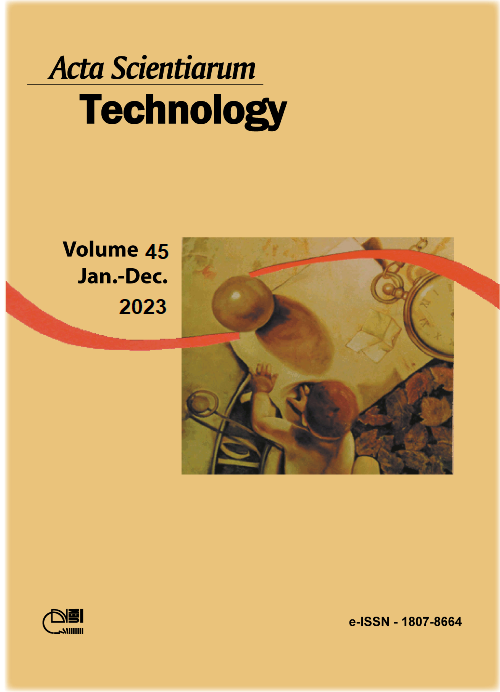DNA Release from Polyaziridine Polyplexes Aided by Biomacromolecules: Effect of pH
DOI:
https://doi.org/10.4025/actascitechnol.v45i1.60454Palavras-chave:
Transfection; heparin; dextran sulfate; QCM-D; acoustic sensingResumo
The pH dependence of heparin and dextran sulfate aided release of DNA from its polyplexes with polyaziridine (PA) has been investigated using Quartz crystal microbalance with dissipation monitoring (QCM-D). The acoustic behavior of ternary systems indicated that the DNA decondensation was favored at physiological pH. When pH < 7.4, PA was significantly positively charged and ternary complexation occurred. When pH exceeded 7.4, very small proportion of DNA was released upon heparin addition due to marked reduction in cationic nature of PA. An increase in thickness at the interface due to adsorbed material at pH 9.0 showed the retention of heparin on the surface despite of negligible release of DNA. In terms of PA binding, heparin proved to be a better competitor than dextran sulfate.
Downloads
Downloads
Publicado
Como Citar
Edição
Seção
Licença
DECLARAÇíO DE ORIGINALIDADE E DIREITOS AUTORAIS
Declaro que o presente artigo é original, não tendo sido submetido í publicação em qualquer outro periódico nacional ou internacional, quer seja em parte ou em sua totalidade.
Os direitos autorais pertencem exclusivamente aos autores. Os direitos de licenciamento utilizados pelo periódico é a licença Creative Commons Attribution 4.0 (CC BY 4.0): são permitidos o compartilhamento (cópia e distribuição do material em qualqer meio ou formato) e adaptação (remix, transformação e criação de material a partir do conteúdo assim licenciado para quaisquer fins, inclusive comerciais.
Recomenda-se a leitura desse link para maiores informações sobre o tema: fornecimento de créditos e referências de forma correta, entre outros detalhes cruciais para uso adequado do material licenciado.















